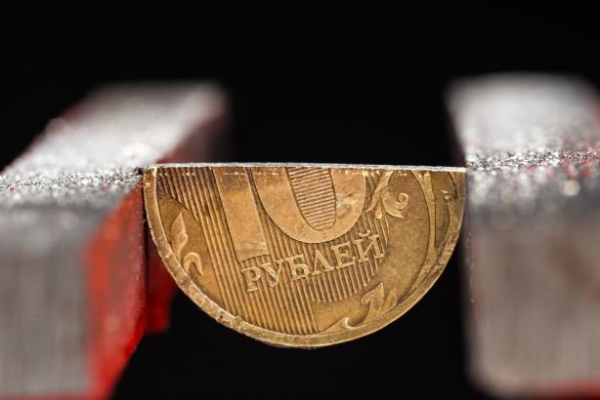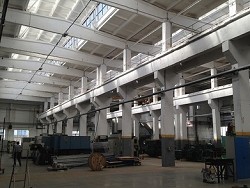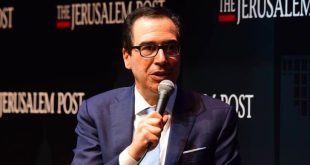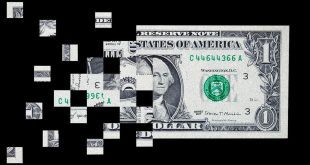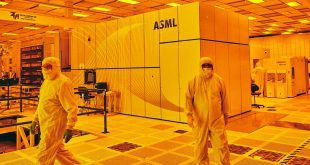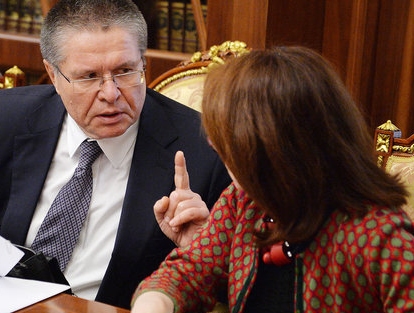
In the night of 10 to 11 March in the Kremlin held a meeting on economic issues. The meeting was attended by President Vladimir Putin, Dmitry Medvedev and heads of departments of the economic block. According to some reports, the meeting was also attended by Sergey Glazyev and Alexei Kudrin. The initiator of the meeting, call the speaker. On the night of the event were discussed issues of development of economy of country programmes and project financing. However, the economic bloc agreed came: against public investment programs proposed Ulyukaev, made Elvira.
About how to “fix” suffering from low mineral prices and from sanctions the Russian economy, the authorities argue for two years. The theme of import substitution and development of small and medium-sized businesses do not descend from strips of publications in the national press. Let us ask a simple question: is the Kremlin before someone bothered to support the native economy? And if prevented, then who? Probably, interfered with citizens, preferring to buy Turkish clothes, American processors, Japanese cars and Italian bowls. And cheese, incidentally, is also Italian. But the citizens did not prevent the Kremlin to drive crude oil “over the hill”. Such a policy, when the oil was actually changed on the cheese and shit, we tend to call “importadores”. Notorious same small business for so many years was adosados taxes and “fees”, often appeared all of a sudden, he is now little left.
The number of small enterprises of the Russian Federation is inferior to the developed countries. We have per 1000 citizens in average have only 10 (ten) small businesses, and in developed countries of Europe — not less than 35. The role of small business in social production also varies considerably: from 10-11% of GDP in Russia up to 50-60% in developed countries (Dadahanov R. R. the current state of small business in Russia // the Young scientist. 2013. No. 5. P. 359).
According to Rosstat, as of 1 January 2015 in Russia has 4.5 million small and medium enterprises, employing more than 18 million people (25% of total employment).
The number of enterprises the sector of small and medium enterprises (SMEs) showed a positive trend only for the categories of small and microenterprises, and 2013 and 2014, the rate of growth of this segment has slowed significantly. The number of micro and small enterprises in 5 years increased by 28% from 1644,3 thousand in 2010 to 2103,8 thousand in 2014. The number of micro-enterprises in 2014 increased in comparison with 2010 almost a third and reached 1868,2 thousand However, the growth of microenterprises in 2014 compared with 2013 was only 40 thousand (2.2 per cent).
It should also be noted that the growth of small and microenterprises happened in those years, the decline in the number of medium enterprises (by the end of 2014 — 13.7 thousand, as in 2013). However, almost two-fold decrease in the number of medium-sized enterprises in 2013 compared to 2010 (was 25.2 thousand) explain statistics to clarify the list of enterprises subject to the criteria for being classified as SMEs by turnover and share capital.
The average monthly accrued wage of an employee is truly depressing: in 2014 it was 19201 rubles a month (for small businesses). In micro-enterprises and below — 15774 p.per month.
The average number of employees per enterprise in 20014, as follows: 1) small and microenterprises — 6 persons; 2) medium-sized enterprises — 121 people.
The main activities of the so-called small business in Russia is almost entirely trading and intermediary services.
On small businesses takes the lion’s share of wholesale and retail trade together with repair of vehicles, motorcycles, household goods and personal items (38.8 per cent). A considerable share of service transactions with immovable property, services and rent (20.4 per cent). Collectively in two articles of 59.2%.
Against this background transfusion from a sieve distressing situation has a small business in the sphere of agriculture, hunting, forestry, fisheries and aquaculture — only 2.9%. Manufacturing is 9.5 per cent, transport and communication — only 6.8%.
In addition, in 2014 the ratio of profitable and losing enterprises in the segment of micro, small and medium business was 80:20. Every fifth company was losing money.
Why is it so bad?
At the end of 2012 and the first half of 2013, individual entrepreneurs in droves went out of business, closed businesses. This was due to the sharp increase in government (2.3 times!) rate premium to the pension Fund since the beginning of 2013 (with 14.386 RUB RUB 32.479). In 2013, ceased operations 965.089 SP. Almost a million! Later, the number PI is also reduced: in 2014, the number of ceased operations amounted to 500 thousand in 2015 — 400 thousand Reduction in PI 2014-2015 and analysts explain the impact of the crisis.
As for the notorious import substitution in 2015 were identified by the experts of the relevant processes in most industries.
Experts from the Institute for economic policy. Gaydar Andrey Kaukin and Pavel Pavlov, said the IA “REGNUM”, indicated that policies of import substitution in Russia does not lead to massive results. Only in some sectors by replacing imported goods with domestic (weak): in metallurgy, the textile industry and the automotive industry. But the dependence on imports, including machinery and equipment remained high. Low involvement in the international chain of value added limits the possibility of increasing output in most process industries, the experts said.
The most noticeable extent of import substitution in the manufacture of motor vehicles (the average annual share of imports in 2015 compared to 2014 decreased by 22.5 percentage points), automotive components (5.7 percentage points), metals and metal ores (4.5 percentage points), textile and haberdashery (7,8 percentage points), food (4.1%). However, the decline in the share of imports in the turnover of vehicles due to the establishment of joint Assembly productions — productions with foreign partners (“AVTOVAZ” and “Sollers”).
At the same time, experts say, there are a number of industries where the process of reverse substitution. It is primarily the pharmaceutical industry and the manufacture of machinery and equipment. The average annual share of imports in the turnover of pharmaceutical and medical products over the 2010-2015 fluctuated in the range of 50-60% (a significant proportion); in 2015, it increased by 3.2 PP in relation to 2014, the Devaluation of the ruble is not provided here, the displacement of imports: the Russian counterparts to the spectrum of drugs and medical equipment does not exist.
In the sector of machinery and equipment in 2012-2015 average annual growth of import share of 17.6 p. p. the Decrease of annual average share of imports in 2015 by 1.1 percentage points, it would be premature to interpret as fracture of medium-term trends.
“Overall, the emerging picture indicates a low realization of the potential of import substitution”, stated the experts.
Some analysts write about the great market opportunities of programming, saying, here is “our” turn around! Experts believe that to unfold in Russia is simply nowhere: the market is very small.
The President of the company “Parallels” Zubarev in interview to magazine “Money” has told about prospects of import substitution in the IT industry as follows: “import substitution in the software in its current version I am very skeptical and think from scratch for the Russian market it is impossible to create something because it’s too small… Operating systems cannot be made profitable, creating them especially for Russia.” On the question of what officials refer to the experience of the PRC, he said, “Because there is a huge domestic market is ten times bigger than ours. All! Besides in China are looking forward 40-50 years, and we have 3-5”.
So what is the Russian government doing? It confers.
On March 13, the newspaper “Vedomosti” gave details of the meeting on economic issues held in the Kremlin on the night of 10 to 11 March.
President Putin gathered his assistant Andrei Belousov, Prime Minister Dmitry Medvedev, his first Deputy Igor Shuvalov, Finance Minister Anton Siluanov and Minister of economic development Alexei Ulyukayev, the Chairman of the Central Bank of the Russian Federation Elvira Nabiullina, and Chairman of the audit chamber Tatyana Golikova. The initiator of the meeting was the speaker, announced the publication of a Federal official. (According to some reports, the meeting was also attended by Sergey Glazyev and Alexei Kudrin.)
The speaker tried to convince colleagues of the need to stimulate economic growth through state investments, one form of which would be project financing. Against this proposal were made by Belousov and Nabiullina, because they don’t like the mechanism of selection of projects.
The Ministry of Finance has developed a methodology for evaluating “satisfactory financial condition of the borrower”: the value of the net assets of the company, applying for financing and government guarantees, may not be less than capital. The borrower must be a valid company with assets that kills the essence of project Finance, said the Manager of one of the state banks.
Another claim — to the banks. “They just in case put the project on the Commission, received approval, and then for a long time do not give money,” — said the source “Vedomosti”. According to him, the Commission selected projects much more than is actually funded.
In a press-service of the Central Bank did not respond to a request “Vedomosti”. The representative of Sberbank (one of the key agents of the programme) also has not responded to the request for publication. The President’s press Secretary Dmitry Peskov refused to comment on the outcome of the meeting, the newspaper reported.
“Vedomosti” remind that under the program of project financing in 2015, we selected 42 projects worth 347,3 billion rubles Projects required 235,5 billion credits. This includes the creation of icebreaking fleet, the airport in Rostov-on-don, projects in the field of pharmaceuticals, import substitution in agriculture, electrical networks, etc. of 4 March 2016, the Central Bank refinanced loans under the program only 69.2 billion rubles (in the words of the speaker led to the correspondent the representative of the Ministry of economic development).
Despite the urgency of the meeting, there was hardly discussed “the world’s destiny”, says the expert of the state Duma Committee on economic policy, innovative development and entrepreneurship, Roman Terekhin. “Most likely, important decisions right now should not be expected, but they can be announced in the near future, he said “the Expert”. At such emergency meetings are rarely made ready important decisions. But can there be discussion and planning, it is the more likely scenario”.
So, it is obvious that “the economic block” — again — didn’t come to a common solution. It seems that our great minds sitting in Ministerial chairs, I can not agree among themselves. If they agree, the “design the program” certainly occurs a failure at the level of intermediaries (the banking system, for example). Meanwhile, citizens continue to buy Chinese toys and boots, wear Chinese underpants, watching Korean TV, to put computers in Taiwan American processors and to enjoy a small increase in the world price of crude oil. Our prediction: on the background of a possible rise in the price of oil in 2016 to 50, and even up to 75$. per barrel, talk about “import substitution” and development of “small business” quietly come to naught.


